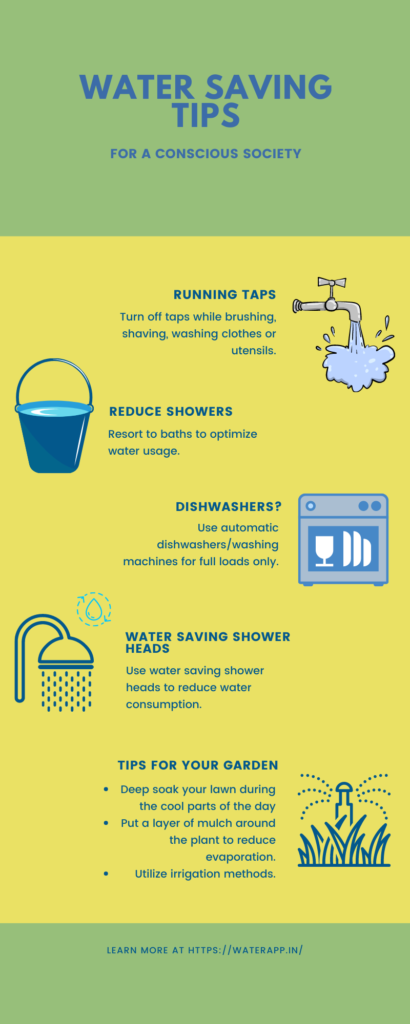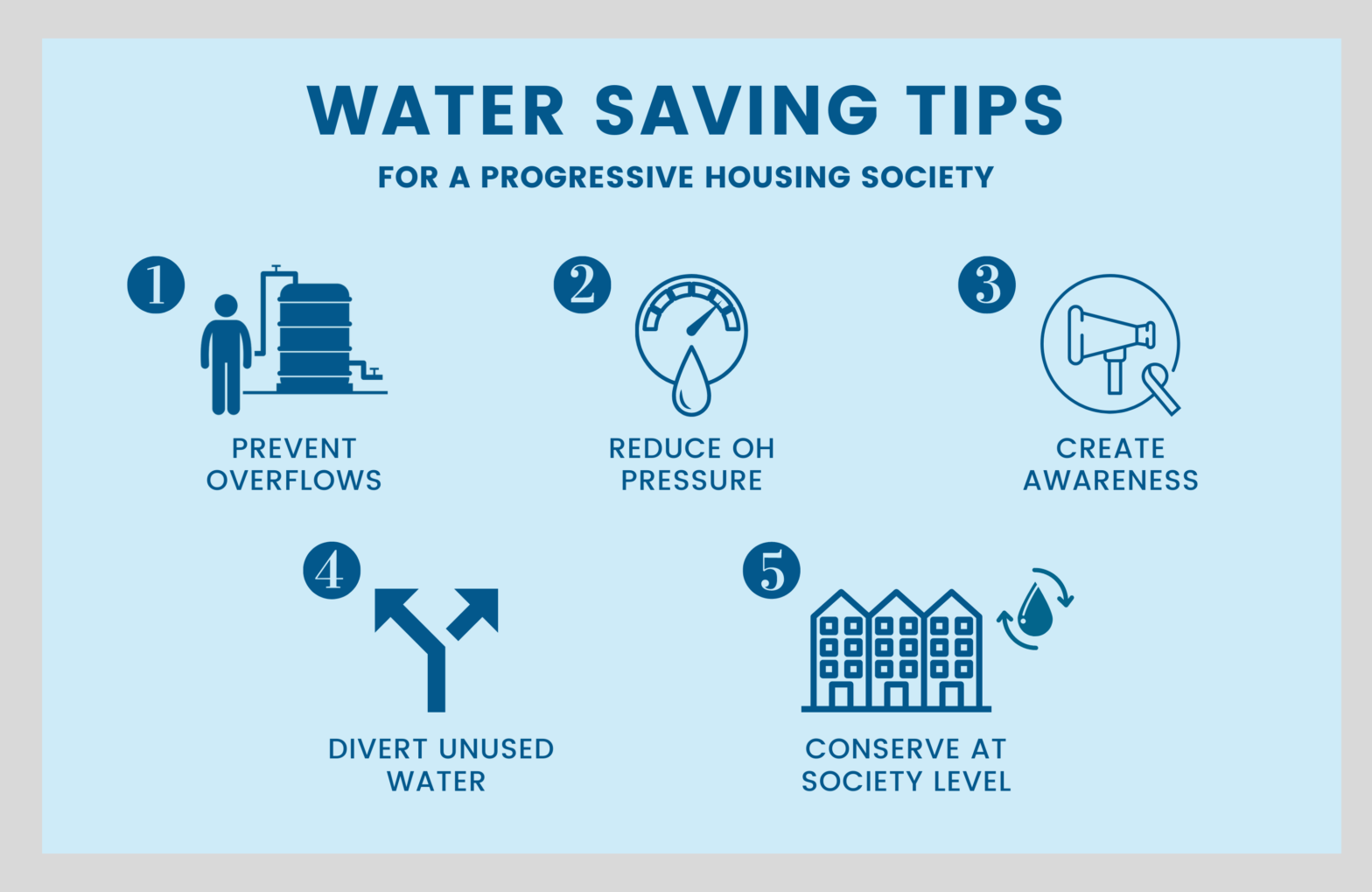Water Saving Tips for Housing Societies
WATER IS FINITE
One of the most basic and easy-to-understand reasons to save water is that our water supply on earth is limited.
Here’s a fun fact– While 70% of the world is covered with water, 97% of this is unfortunately undrinkable saltwater. Of the freshwater available, 2% comprises our polar ice caps and the remaining is water that we use for EVERYTHING.
Conserving water means using water wisely. As every individual depends on water for livelihood, understanding its importance is of utmost priority. Not just conserving, but ensuring that our water supply remains fresh, pure and unpolluted, will protect the water for future generations to come. Housing societies are the perfect platform to motivate residents to pay attention to how they use water in their homes and if there is any scope to reduce water wastage. Here are some tips.
Water Saving Tips for Housing Societies
1. Prevent overflows:
In today’s age, allowing water to overflow is equivalent to committing a crime.
Did you know that- A 10 min overflow can cause a wastage of 1500 liters – enough to wash 50 cars?
- Overflows not only cause water wastage, but they also cause other damages such as leakages in the construction.
- In most cases overflows occur because of negligence. The watchman ends up switching the pump ON and ends up forgetting about it while he’s doing other things. Meanwhile the tank overflows.
- Such human errors can be easily avoided with the right instrumentation such as overflow alarms and float switches. In this WaterApp blog we have described all the different equipment that can be used for water measurement and monitoring.


2. Operate with Reduced Pressure
- If managed well, managing pressure can be a novel but effective way of reducing water consumption.
- Typically, with the automatic pumping system, the overhead tank is filled up to the brim and gets refilled once the level becomes low.
- In times of scarcity, this overhead tank can be filled up to 60-70% capacity instead of 100%.
- This will reduce the pressure of water flowing in the pipes and taps. Thus, when the tap runs, water will flow at a reduced pressure and less water will be consumed in the same duration.
- This can be applied to other areas as well such as keeping the valve of the hose only half open when watering the garden. This way, water flows with lower pressure and plant watering can be done carefully with minimal water wastage.
- Other ideas include using devices such as aerators that mix air with water. This reduces the volume of water flowing through the tap but the feel of the flowing water remains unchanged.


3. Create Water Awareness in the Community
– Social campaigns help to draw the public’s attention to the dire water situation.
– This needs to be done on a regular basis by constantly reminding people through direct and subtle ways so that its importance is widely heard.
– Here are some creative ways in which societies can create water awareness among their people:
- Publish reports
- For e.g. Societies can publish statistics on water consumption and expenditure per tower.
- When residents see these kinds of numbers every month, it motivates them to reduce wastage and bring down these numbers.
- Educate residents
- From time to time, societies can proactively share some water saving tips with their people.
- For e.g. During summers, the management committee can request residents to wipe their cars with a wet cloth instead of washing them with a pipe.

- Gamification
- Societies can use gamification strategies to create water awareness within their residents.
- For e.g., Declaring an annual award for the tower that consumed the least volume of water in that year.

4. Divert Unused Water
- We have noticed that societies initially receive water from the Municipal Corporation into their drinking water tank.
- Typically, there is a float valve installed at the top of the tank which shuts off when the tank is full.
- In general, drinking water tanks are built to store a large volume of water – much more than what is typically consumed on a daily basis.
- In times of water scarcity, societies can choose to store a little bit more (say 20% more) than their daily requirement in their drinking water tank and divert the rest of the corporation’s water to their domestic tank.
- This way, they reduce the number of tankers ordered. The hardness of their domestic water also gets controlled as it gets mixed with the corporation’s water.
5. Practice what you Preach
If the management committee wishes to inspire its residents to save water in their homes, the committee in itself should incorporate water saving practices at the societal level.
The society can start with simple and demonstrable practices to educate its residents in the right manner.
E.g. Watering gardens in the evenings instead of mornings, so that losses due to evaporation can be avoided.
Investing in water management equipment such as water level indicators, overflow sensors and pump controllers to control unnecessary overflows and leakages. Here we discuss how modern technologies such as IoT can provide better water management.
Techniques like water harvesting and drip irrigation can also be adopted by the committee, to help with water conservation.
Also Read- Equipment for Water Management and Measurement

To summarize, we all know that charity begins at home. Societies can bring about effective change with just a few simple practices described above. Today, industries already have strict norms and regulations for water usage, but it’s time to bring this awareness into the residential sector as well. Let’s get started.

